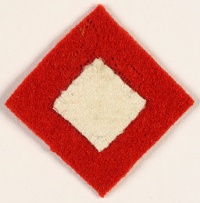| 42nd Armoured Division | |
|---|---|
 42nd Armoured Division insignia | |
| Active | 1 November 1941 – 17 October 1943 |
| Country | |
| Branch | |
| Type | Armoured Division |
| Size | 13,235 men [1] 227 tanks [nb 1] [nb 2] |
| Commanders | |
| Notable commanders | Miles Dempsey |
The 42nd Armoured Division was an armoured division of the British Army raised during the Second World War.